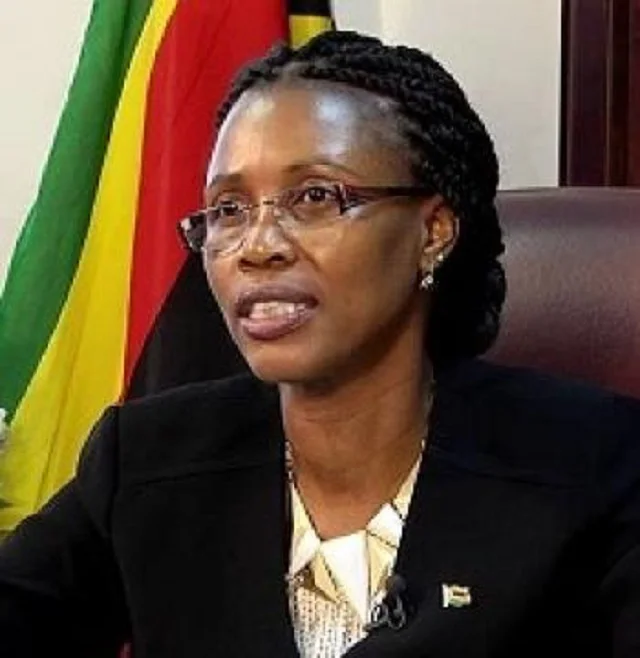
ZIMBABWE, among other countries, has taken heed of the global calls to turn to renewable sources for energy production, amid rising concerns of climate change. Business reporter Freeman Makopa (FM) caught up with Energy permanent secretary Gloria Magombo (GM) to discuss the ministry’s efforts to increase the use of renewable energy.
FM: How far do you want renewables to expand in the next five years and how will you ensure that this happens?
GM: Developments in the renewable energy sector for the next five years are guided by two main policy documents. These are the Renewable Energy Policy of 2019 and the National Development Strategy (NDS1), which covers the period 2021 to 2025.
The policy has targets for the various renewable energy sources, which are to be achieved by the year 2030 in line with the United Nations Sustainable Development Goals (SDGs) and our Vision 2030. By 2025, we expect to add an additional 1 100 MW from solar projects, wind energy projects, waste-to-energy and small hydropower projects among others.
This will be done through projects done by the public corporates, such as, Zesa, as well as, private sector led projects done by Independent Power Producers(IPPs) licenced by the Zimbabwe Energy Regulatory Authority.
By the end of 2022, we expect to add about 100MW from various solar projects that are currently being built by IPPs.
In the NDS1 strategy, we intend to increase energy access levels from 44% to 54% through rural electrification using both grid electricity and off-grid renewable energy.
This is being done by the Rural Electrification Fund (REF) and other players in the sector. We also intend to procure more than 300MW of solar at various sites through a competitive bidding process. This will be complemented by new capacity to be developed by licenced IPPs.
- Chamisa under fire over US$120K donation
- Mavhunga puts DeMbare into Chibuku quarterfinals
- Pension funds bet on Cabora Bassa oilfields
- Councils defy govt fire tender directive
Keep Reading
Government has already promulgated various incentives that are meant to reduce costs and improve the ease of doing business to ensure rapid deployment of renewables. Government is also developing an energy efficiency strategy and policy, which is key to ensuring that efficient use of energy is prioritised.
Fact file: Gloria Magombo- Magombo has more than 32 years of experience in the energy sector spanning the fields of engineering, management, power sector reform and regulation.
- Her key areas of experience and expertise, include strategy development and implementation, general management, project management, power plant operations and maintenance, plant optimisation and testing, generation planning, feasibility studies, energy sector regulation and training of technical staff and general management.
- Before her appointment as Energy permanent secretary, Magombo served as the chief executive officer (CEO) of the Zimbabwe Energy Regulatory Authority (Zera).
- She was the managing director of an international consultancy firm, Norconsult Botswana.
- Magombo worked as regional energy advisor with Southern Africa Global Competitiveness Hub.
- She is a former executive commissioner of Zimbabwe Electricity Regulatory Commission (ZERC).
- She served as a performance engineer and generation expert for Zesa.
- She served as the regional chairperson of Capacity Building Portfolio for the Regional Electricity Regulators Association (RERA) before she was appointed as the chair for RERA prior to her reassignment as secretary for Energy and Power Development.
- Magombo served as a councillor at the Engineering Council of Zimbabwe (ECZ) and also served in various boards, including, as the vice chairperson of the Harare Institute of Technology (HIT) board.
- She is a representative of Zimbabwe to the International Renewable Energy Agency [IRENA]. Magombo has represented the government and sector on special committees on energy issues and has presented papers at various meetings.
FM: Zimbabwe currently relies on domestic coal-fired power for electricity generation. What does this mean in regard to your climate change commitments?
GM: Let me start by clarifying that electricity generation in Zimbabwe is dominated by hydropower from Kariba, though the percentage split is almost 50% hydro and 50% coal thermal power. However, given the generation challenges we experience from Hwange Power Station, our supply is predominantly more than 60% hydropower.
We are also getting about 140MW from renewable energy sources, particularly, from Bagasse in Triangle, mini-hydropower from Manicaland and other solar projects that have been connected to the grid. As a ministry, we are fully aware of our climate change commitments, which require us to reduce our carbon footprint by 40% across all sectors of the economy.
We believe that for us to develop, we need to urgently use all the energy resources we have in a cost effective and environmentally friendly manner while ensuring that we achieve universal energy access. It is for this reason that we are developing various energy projects, such as, Hwange 7 and 8, which is thermal, Batoka Hydropower (which is renewable) and various solar projects that are currently under development.
In the short term, we need to provide energy and power to all our citizens while in the medium to long term, we have to implement mitigation projects that address our climate change commitments. We also believe there are technologies which exist for carbon sequestration, which might be expensive for now but will reduce as more research and innovation is done.
We believe that our agricultural crop production and planting of trees will remain critical to assist in the absorption of carbon dioxide whilst use of scrubbers will reduce sulphur oxides (SOx) gases and other harmful effects.
FM: What innovation or research and development (R&D) initiatives will Zimbabwe use to become a regional leader in hydrogen?
GM: It is important to note that we have always been leaders in hydrogen production at Sable Chemicals since the 1970s. Going forward, we are now exploring opportunities to generate electricity for hydrogen production using renewable energy. The green hydrogen produced can then be used to make green ammonia and also for other industrial activities.
In terms of R&D, we have already started the process of engaging academic institutions to do more research on green hydrogen. We are also actively participating in a regional (Sadc) project that seeks to produce a Hydrogen Atlas for Zimbabwe and the region. We expect this atlas to be finalised this year.
According to the data collected as part of the atlas, Zimbabwe has enough land and abundant solar, biomass, wind and hydro which, are critical for setting renewable energy units and hydrogen production infrastructure. The country also has surface and underground water, which is another input for green hydrogen production through electrolysis. Hydrogen has applications in power generation, transportation, chemical and fertiliser manufacturing and metal refining.
FM: Green hydrogen is one of the most expensive renewable energy source technologies. Is it a central part of your energy policy?
GM: Green hydrogen is the most topical issue in the energy sector worldwide. As a country, we do not intend to be left out. In fact, we eagerly await the production of the Green Hydrogen Atlas for Zimbabwe so that we see how we can integrate the findings into our strategies and policies for decarbonisation in the long term. We expect that if the technology is rolled-out on a large scale and as technology improves, the costs will go down. Already, costs are lower due to technological advances and various options for hydrogen production need to be investigated.
FM: Where are the investment opportunities in Zimbabwean renewable energy?
GM: Given the abundant renewable energy resources, we have, we do have various opportunities such as:
- Development of various solar projects by IPPs that may be connected to the grid;
- Rooftop mounted solar systems also connected to the grid through net metering scheme that is already in place;
- Wind power projects at selected sites across the country
- Waste-to-energy projects in our cities working closely with our municipalities;
- Off-grid mini-grid projects in areas where the grid is distant
- Portable solar lighting systems;
- Mini-hydropower projects at dam sites and on perennial rivers
- Biofuels production for blending purposes;
- Solar water heating for hot water among others;
Development of various hydro projects on the gorges on the Zambezi basin, Batoka, Mupata , Devils Gorge and Mphanda Nkuwa;
We also believe that through innovation and research and development more innovative energy forms will be emerging soon hence close collaboration with innovative hubs – energy research fund, and
Opportunities for assembling solar panels and other energy equipment.
FM: What will Zimbabwe’s renewable energy sector look like in 2030?
GM: By 2030, we expect the renewable energy sector to be the dominant source of energy. Our policy envisages that we will add an additional 2 100MW from renewables to the grid excluding large hydro. If we add large hydro plants Batoka, Devils Gorge etc, renewables will contribute more. We also expect an increased penetration of other renewables, such as biogas, wind and solar geysers, mini-grids among others, including more prosumers (consumers with own production facilities).
FM: What are Zimbabwe’s plans for expansion of power generation and distribution?
GM: The flagship projects for power generation in the short term are the Hwange expansion project (2x300MW), the Hwange life extension project (additional 280 MW), Batoka Hydropower (1 200MW) and other 500MW solar projects to be developed by government competitive procurement through IPPs. Various industries and mines are currently planning on solar plants with PPC targeting 30MW by year end (developer in place), Caledonia Mine 12MW (under construction) and Zimplats (Selous and Ngezi) 180MW, RioZim various mines 75MW etc.
These are projects, which have been licenced and some are under construction already. Other projects will include 100MW wind with resource assessments on going at the moment. Various gas projects with potential for over 2 000MW are planned.
The transmission and distribution infrastructure will also be upgraded accordingly. New transmission lines from the Hwange area are being built in order to evacuate power to other parts of the country.
The distribution projects will generally be done by REF, as part of the rural electrification exercise, whilst ZETDC is planning to connect about 305 000 new consumers and build relevant distribution networks and upgrade existing and build ZIZABONA, MOZISA transmission projects, which link us to other regional loads.
FM: How feasible is it to bring in hydrogen given the vast amounts of coal deposits?
GM: Government is not looking at importing hydrogen. Rather we are interested in generating green hydrogen using our available resources. Recent events at the Climate Change Conference in Glasgow point to a situation where investments in coal will be reduced but not eliminated. We will continue to have coal in our energy mix while we increase the contribution of renewables. As such, we are ready to look into new energy sources that are clean, sustainable and can attract funding.
We believe that we need to be capacitated to access clean finance funding to develop capacity to produce green hydrogen and export it — we are working on a strategy to implement this.
Hydrogen can also be produced using gas and other energy forms but this is not sustainable hence the emphasis on green hydrogen.
As a country we have developed a low carbon development strategy and are working on developing a pipeline of green projects which can access the funds pledged by developing countries to assist in ensuring that the energy transition is just where no one is left behind. Parts of the funds will be used for retraining and development of new skills to accelerate uptake of new technologies.
This will be a process which has started with a few steps!











